
Roots
Our hair, particularly textured hair, carries within its very structure the whispers of generations, a profound memory etched into each coil and curve. This is not a simple biological artifact; it is a living archive, a continuous narrative stretching back to the earliest human communities. To consider what ancient herbs brought benefit to textured hair demands more than a casual glance at botanical properties.
It calls for an attentive ear to the stories held by our strands, to the ancestral hands that nurtured them, and to the earth that provided sustenance across continents and epochs. This exploration seeks to understand the deeply intertwined relationship between ancient botanicals and the unique biological needs of textured hair, viewed through the lens of a heritage that celebrates resilience and wisdom.
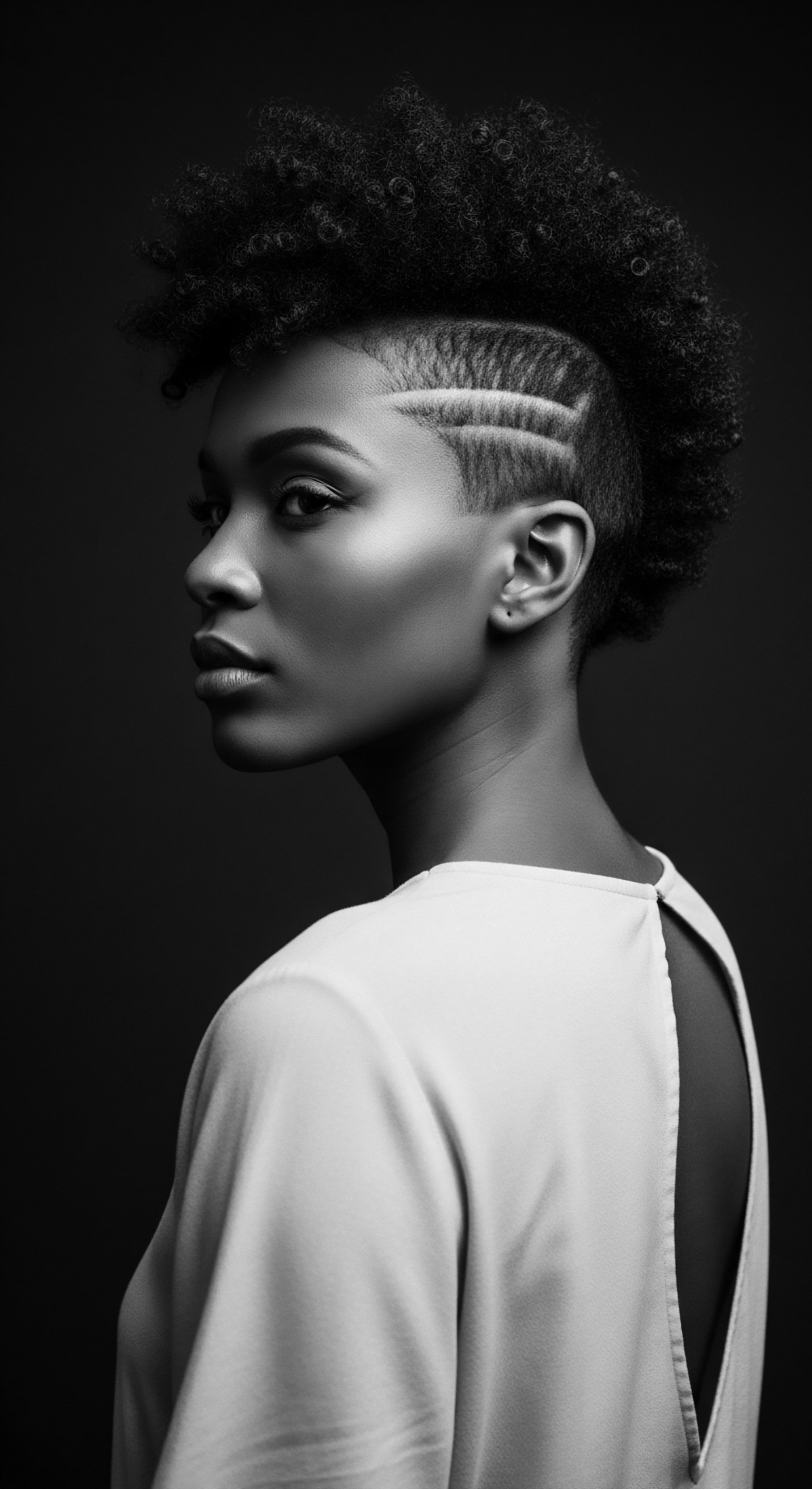
Ancestral Hair Biology
The core understanding of hair, even in distant times, often arose from keen observation and empirical knowledge. Ancient custodians of hair traditions, through countless generations of care, recognized patterns of growth, strength, and vulnerability specific to diverse hair forms. They might not have spoken of cortical cells or disulfide bonds, but their practices speak volumes about their comprehension. Textured hair, with its inherent coil and often greater porosity, presents distinct requirements for hydration and structural fortitude.
Early practitioners understood these needs intimately. They noticed how certain plant preparations brought a protective coating, reduced breakage, or softened the hair’s external layer, the cuticle. This observational science, honed over millennia, laid the groundwork for sophisticated care rituals that mirrored an intuitive grasp of hair’s fundamental workings.

Indigenous Understandings of Hair Form
Before modern classification systems, ancestral communities often categorized hair based on characteristics they observed and their utility within specific styling practices. The language used to describe hair patterns would often connect to natural elements ❉ the spiral of a shell, the coil of a vine, the tight spring of a seed pod. These descriptions, passed through oral histories and communal practices, shaped how different hair types were cared for. Hair was not merely an aesthetic feature; it signified lineage, marital status, age, and social standing.
The care practices, including the herbs employed, were therefore not uniform. They varied according to the hair’s form, its cultural meaning, and the environmental conditions of the region. A shared wisdom developed regarding which local plants best supported the integrity of each hair expression.
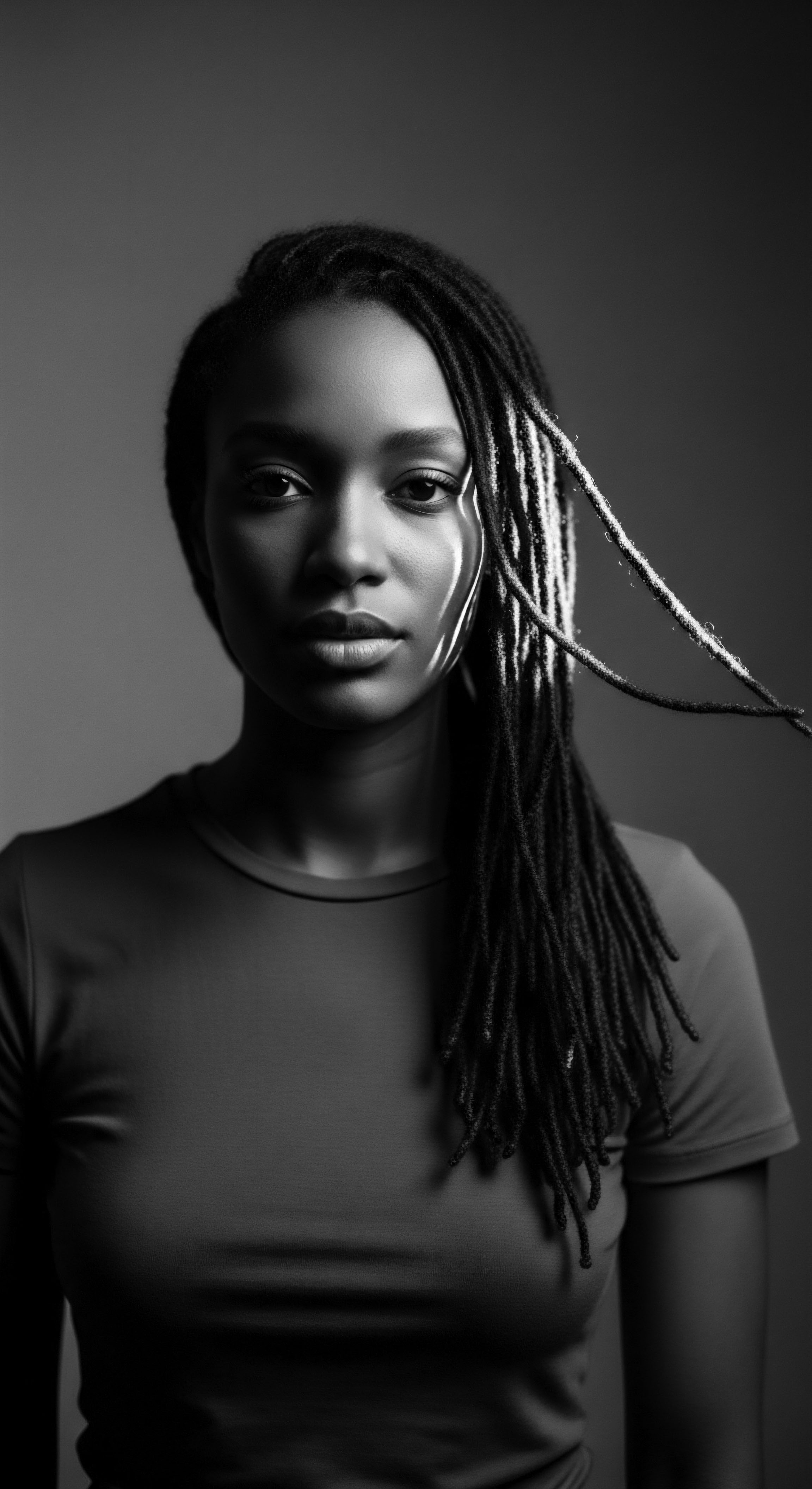
A Lexicon of Textured Hair Lineage
The historical lexicon surrounding textured hair is rich with terms that describe both the physical attributes of hair and the cultural practices surrounding it. These terms often speak to the profound connection between identity and hair. When communities spoke of “strong strands” or “lustrous coils,” they alluded to both a desired physical state and the deeper symbolic strength within their people.
The naming of specific styles, like Bantu knots or various forms of braids, sometimes directly referenced the plants or materials used in their creation or maintenance. This cultural vocabulary, transmitted across generations, offers a window into the holistic approach ancient communities held towards their hair and the natural ingredients that sustained it.
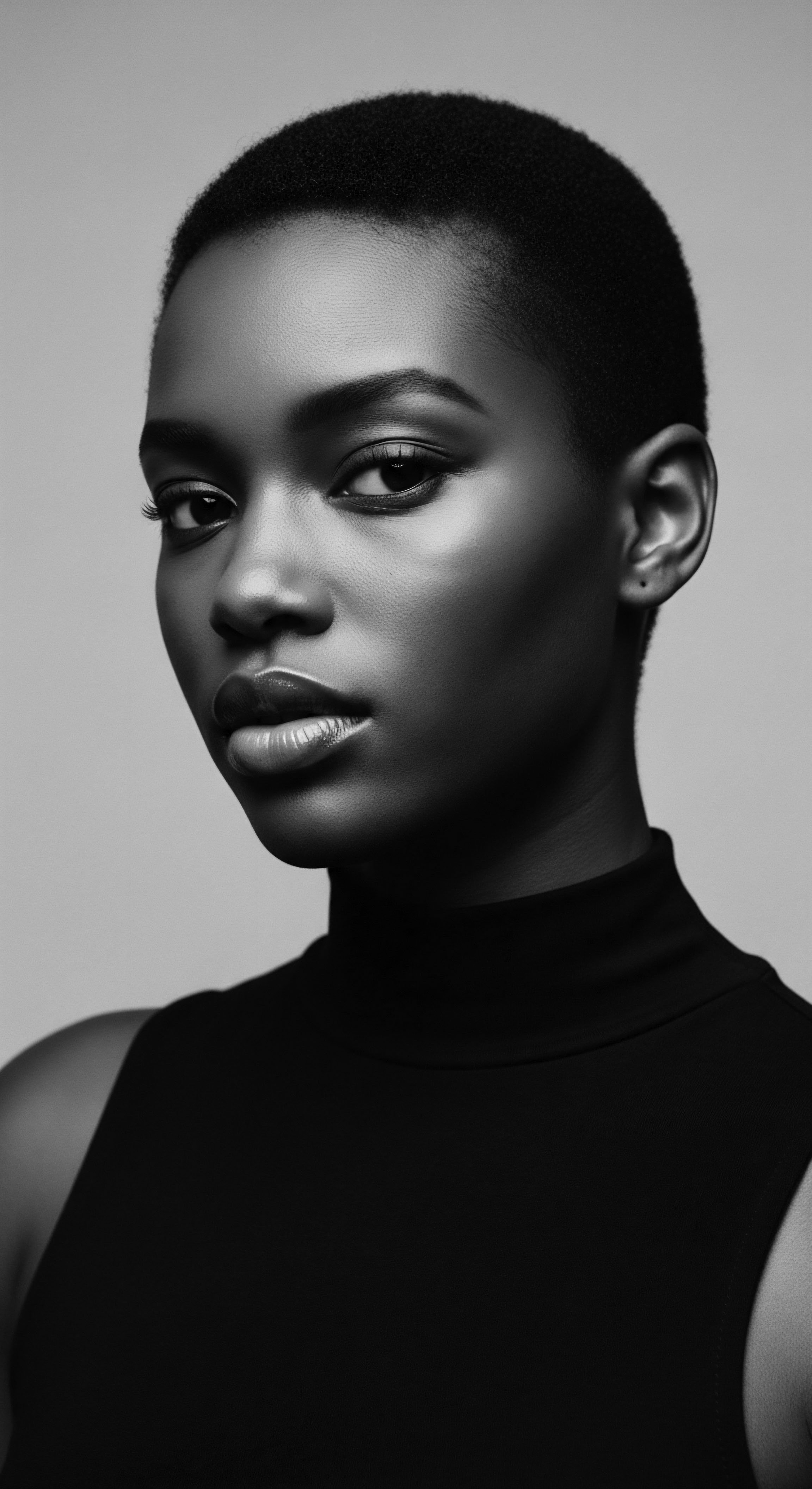
Growth Cycles and Earth’s Provision
Hair’s cycle of growth, rest, and renewal was intimately observed by those who lived closely with nature’s rhythms. Environmental factors, alongside diet and overall wellness, were understood to influence hair vitality. Ancestral nourishment strategies, often plant-based, contributed significantly to hair health. The very foods consumed, rich in vitamins and minerals, played a part in the hair’s internal resilience.
Herbs applied topically served a complementary role, acting as external fortifiers and healers. This dual approach of internal and external care, deeply embedded in many ancestral practices, recognized that true hair health stemmed from a harmonious relationship with the surrounding ecosystem.
Ancestral hair wisdom recognized distinct needs for coiled hair, devising sophisticated care practices from keenly observed natural remedies.
Among the foundational botanicals employed, a few stand out for their enduring legacy in supporting textured hair, their efficacy passed down not only through oral tradition but also through the sheer evidence of long, healthy hair in those who used them.
- Shea Butter ❉ From the shea tree, native to West Africa, this rich butter has been a cornerstone of hair and skin care for centuries. Its emollient qualities were essential for providing deep moisture and protection against harsh environmental elements, which is particularly beneficial for the often dry nature of textured hair. Archaeological research led by Daphne Gallagher at the University of Oregon found evidence of shea nut processing at the Kirikongo site in western Burkina Faso dating back to A.D. 100, extending its known use by a millennium. (Gallagher, Dueppen, & Walsh, 2016) This indicates a long history of this resource being an important part of West African life, far beyond simple beauty. It points to a deep, integrated use within communities, where the shea tree was not only a source of sustenance but also a primary element in maintaining hair’s well-being and appearance. The persistent practice across such a vast historical span speaks volumes about its efficacy and central place in the heritage of hair care.
- Chebe ❉ Hailing from Chad, this powder, a mix of Croton zambesicus (Lavender Croton), Mahllaba Soubiane, cloves, and other elements, gained recognition for its ability to prevent breakage and aid length retention. Basara women in Chad are well-known for their exceptionally long hair, a result of generations-old methods of coating their strands with this herbal mixture. The protective barrier Chebe creates helps to seal in moisture and reduce friction, common challenges for textured hair.
- Amla (Indian Gooseberry) ❉ A staple in Ayurvedic and Siddha medicine from India, Amla was valued for its ability to strengthen hair, promote growth, and prevent premature graying. Ancient texts like the Charaka Samhita (800 BCE) and Sushruta Samhita (600 BCE) detail its use as a rejuvenator for hair and scalp health. Its antioxidant content was instinctively appreciated for its fortifying abilities.
- Fenugreek ❉ Known as methi in some regions, these seeds, widely used in Indian and Middle Eastern traditions, were prized for conditioning and strengthening hair, as well as addressing scalp issues. Ancient Ayurvedic texts recommend it for hair growth and to combat hair loss, emphasizing its ability to fortify strands from the roots.
- Hibiscus ❉ This vibrant flower, utilized across Africa, Asia, and India, was historically applied to stimulate hair growth, prevent hair loss, and add shine. Its conditioning properties helped soften and detangle, making textured hair more manageable.
- Aloe Vera ❉ Present in African, Native American, and Latin American traditions, the gel from this succulent provided moisture, soothed scalps, and was used as a natural conditioner, offering protection from environmental rigors.
These ancient herbs, and many others, were not just applied at random. They were integrated into daily and weekly routines, becoming an inextricable part of cultural identity and communal well-being, reflecting a profound dialogue between humanity and the giving earth.

Ritual
The journey of textured hair through history is not simply one of growth and shedding; it is a profound narrative of ritual, community, and the profound art of self-expression. Ancient herbs, far from being mere ingredients, were at the heart of these practices, transforming simple acts of hair care into ceremonies that affirmed identity and sustained cultural lineage. The application of these botanicals was often deeply embedded within the rhythms of daily life, seasonal celebrations, and significant rites of passage, creating a living tradition of care.

The Art of Ancestral Styling Techniques
Consider the intricate world of protective styling, a practice with roots stretching back millennia across African communities and diasporic populations. Braids, twists, cornrows, and various forms of locs were not merely aesthetic choices. They served as vital forms of hair preservation, protecting delicate strands from environmental exposure, reducing tangling, and promoting length retention. Ancient herbs were woven into these practices with intention and skill.
Shea butter, for example, was applied generously to strands before braiding, providing a lubricated surface that minimized breakage during the styling process. This allowed for the creation of durable, protective styles that could last for extended periods, reducing the need for daily manipulation and further preserving hair health. The very act of styling often became a communal gathering, a space where intergenerational wisdom was shared, and the utility of specific herbs was demonstrated and taught.
Traditional styling, far from mere appearance, was a protective practice often enhanced by ancient herbal applications.
Chebe powder, as another powerful example, speaks directly to this protective tradition. The Basara women of Chad traditionally apply a mixture of Chebe powder, oils, and other elements to their hair, then braid it. This coating forms a physical barrier that helps lock in moisture, reducing the friction that leads to breakage in textured hair. The powder itself contains ingredients that some believe contribute to hair strengthening, allowing for remarkable length retention.
This method, documented through generations, represents a deliberate strategy to counteract the unique challenges that tightly coiled hair can present, turning styling into a long-term care strategy. The ritual of application, often a communal activity, reinforces bonds and transmits knowledge from elder to youth.

Tools and Herbal Preparations from Antiquity
The tools accompanying these ancient hair rituals were as essential as the herbs themselves. Natural combs, sometimes crafted from wood or bone, were used with a gentle touch, often after hair had been softened with herbal infusions or oils. The process of preparing the herbs was itself a ritual. Plants might be dried, crushed into powders, infused in carrier oils, or steeped to create cleansing rinses.
- Powdered Herbs ❉ Amla and Fenugreek were often ground into fine powders, then mixed with water, yogurt, or other nourishing agents to create conditioning masks for the scalp and hair. This allowed for direct contact with the roots, delivering their fortifying compounds.
- Herbal Oils ❉ The creation of herbal-infused oils involved soaking botanicals like Hibiscus or Rosemary in oils such as coconut or sesame. This lengthy steeping process extracted their beneficial compounds, creating potent elixirs for scalp massage and hair conditioning.
- Cleansing Roots ❉ Certain roots, such as Yucca Root used by Native American tribes, were crushed to create a natural, gentle lather for cleansing the hair and scalp, honoring the earth’s detergents.
The preparation itself was an act of reverence, ensuring the potency of the botanical was fully expressed before application. This dedication to process speaks to the deep respect held for both the natural world and the body.

Cultural Identity and Adornment
Hair, especially textured hair, has long served as a powerful medium for expressing cultural identity and collective history. Hairstyles were intricate, often communicating an individual’s lineage, status, and affiliations within their community. The addition of natural elements like beads, cowrie shells, and sometimes even clay mixtures, often served both decorative and protective purposes. The herbs used in hair care not only supported hair health but also contributed to the overall aesthetic, providing shine, softness, or a particular scent that was culturally significant.
The Himba people of Namibia, for example, traditionally use a mixture of red ochre, butter, and aromatic resins to coat their hair and skin. This iconic red appearance, known as ‘otjize,’ serves as sun protection, an insect repellent, and a deeply significant cultural marker. It communicates marital status, age, and beauty ideals within their community, showcasing how hair care rituals blend practical benefit with profound cultural expression. This practice demonstrates a complete integration of environment, resources, and social identity into hair maintenance.
The transition from raw, unprocessed herbs to prepared mixtures and then to more defined styling aids speaks to an evolving sophistication in managing and celebrating textured hair. These rituals, whether daily acts of oiling or elaborate ceremonial preparations, reinforced a connection to ancestral lands and the wisdom passed down through unbroken chains of communal care. The herbs, then, were not just for the hair; they were for the soul of the strand, connecting the individual to their heritage.
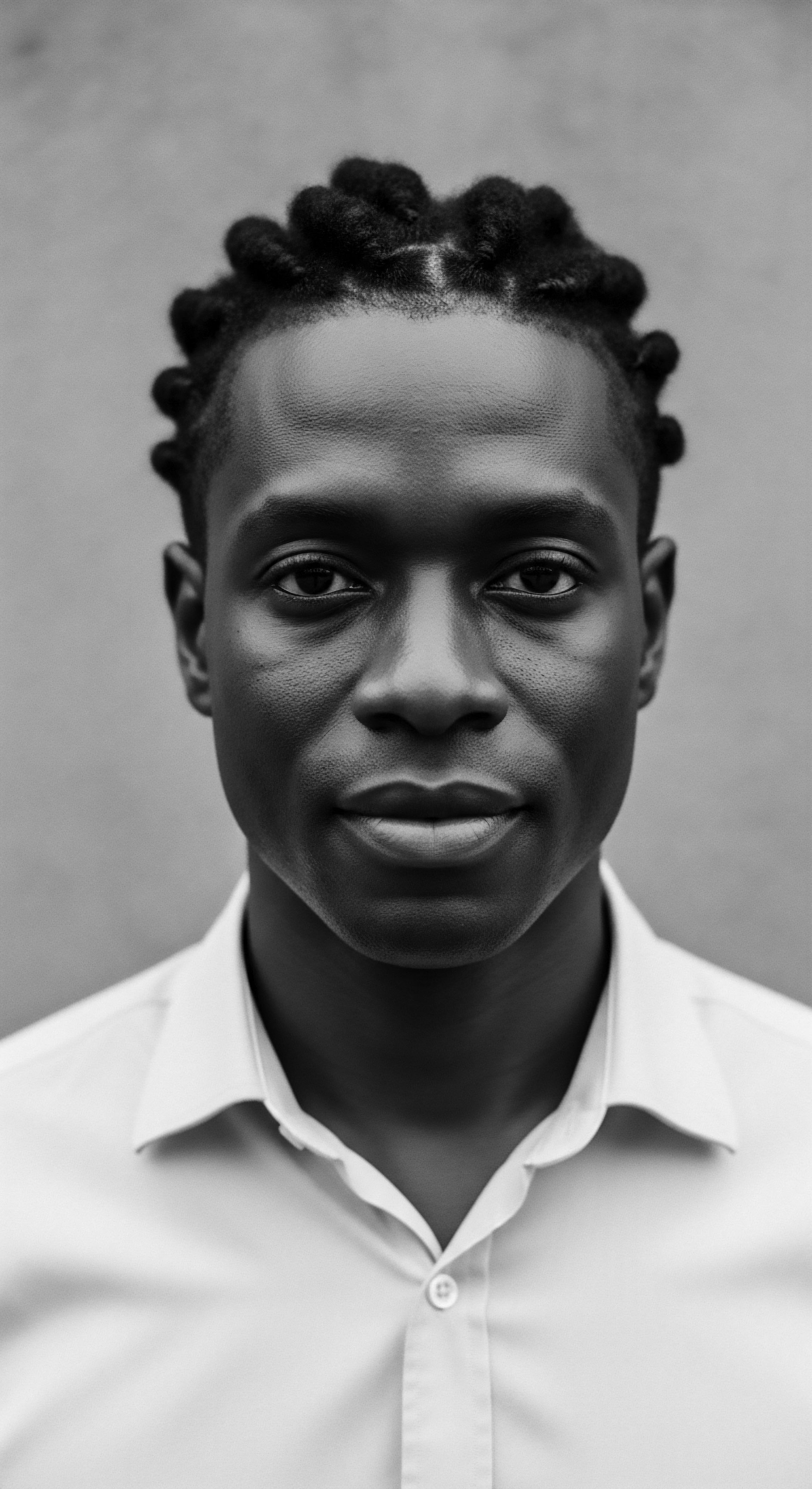
Relay
The journey of understanding ancient herbs and their contributions to textured hair extends beyond their historical application; it includes a profound contemporary relevance, acting as a relay of wisdom from past to present. Modern scientific inquiry often echoes the empirical observations of our ancestors, providing a deeper understanding of why these timeless botanicals have long been revered. This exploration links the nuanced properties of ancient herbs to contemporary challenges, highlighting how inherited knowledge continues to guide us toward holistic well-being for textured hair.

Holistic Well-Being and Scalp Harmony
Ancestral wellness philosophies always perceived hair health as a reflection of overall bodily balance and harmony with one’s environment. This holistic perspective is evident in the selection and application of ancient herbs. Many botanicals employed for hair also possessed properties valued for general health, suggesting that internal vitality was considered foundational to external radiance. For instance, the traditional use of Amla in Ayurvedic systems, documented in ancient texts, was not solely for hair.
It was also considered a ‘Rasayana,’ a rejuvenating herb for overall well-being, balancing bodily energies (doshas). This understanding points to a belief that a healthy internal state supports healthy hair, a principle that current wellness advocates increasingly champion.
The scalp, as the living ground from which hair emerges, was a primary focus of ancient herbal treatments. Herbs with anti-inflammatory, antimicrobial, or soothing properties were prized for maintaining a clean and calm scalp environment. Fenugreek, for example, contains compounds with anti-inflammatory and antifungal effects, which modern science suggests contribute to scalp health and potentially alleviate conditions like dandruff.
This scientific validation provides a contemporary lens on long-standing practices, showing that the efficacy observed by ancestors has a biochemical basis. The traditional application of pastes or oils containing Fenugreek directly to the scalp speaks to this direct focus on the hair’s foundation.

Understanding Botanical Compounds for Hair
While ancient communities lacked the tools to isolate specific chemical compounds, their consistent results with certain herbs speak to an innate understanding of botanical potency. Today, we can connect that ancestral wisdom with specific phytochemicals and their actions.
| Botanical Ingredient Shea Butter |
| Traditional Application & Ancestral Observation Used as a protective barrier, moisturizer, and softener, particularly in arid climates, passed down through generations in West Africa. |
| Contemporary Scientific Understanding of Benefit Rich in fatty acids (oleic, stearic, linoleic) and vitamins A, E, F. Provides deep conditioning, forms a protective seal on hair strands, reduces water loss, and enhances elasticity, preventing breakage. |
| Botanical Ingredient Chebe Powder |
| Traditional Application & Ancestral Observation Applied by Basara women for centuries to prevent breakage and aid length retention, often mixed with oils and fats. Creates a coating. |
| Contemporary Scientific Understanding of Benefit Contains natural crystalline waxes and triglycerides that seal the hair cuticle. Antioxidants may protect against environmental harm. Primarily works by reducing mechanical stress and moisture loss, preserving existing length. |
| Botanical Ingredient Amla (Indian Gooseberry) |
| Traditional Application & Ancestral Observation A staple in Ayurvedic and Siddha traditions for hair strengthening, growth promotion, and prevention of premature graying. Applied as oil or paste. |
| Contemporary Scientific Understanding of Benefit High in Vitamin C, tannins, and antioxidants. Supports collagen production, strengthens hair follicles, has astringent properties for scalp health, and can help maintain hair pigment. |
| Botanical Ingredient Fenugreek Seeds |
| Traditional Application & Ancestral Observation Used in Indian and Middle Eastern traditions for hair growth, strengthening, and addressing scalp ailments like dandruff. |
| Contemporary Scientific Understanding of Benefit Rich in proteins, iron, and nicotinic acid. Contains flavonoids and saponins with anti-inflammatory and antifungal properties, promoting a healthy scalp environment and stimulating hair growth. |
| Botanical Ingredient These ancient remedies exemplify a profound continuity between inherited care practices and modern scientific validation, underscoring their lasting value for textured hair. |
The consistency of observed results across diverse regions where these herbs were used provides compelling testimony to their efficacy. It validates a form of empirical research conducted over hundreds, even thousands, of years, predating modern laboratories.
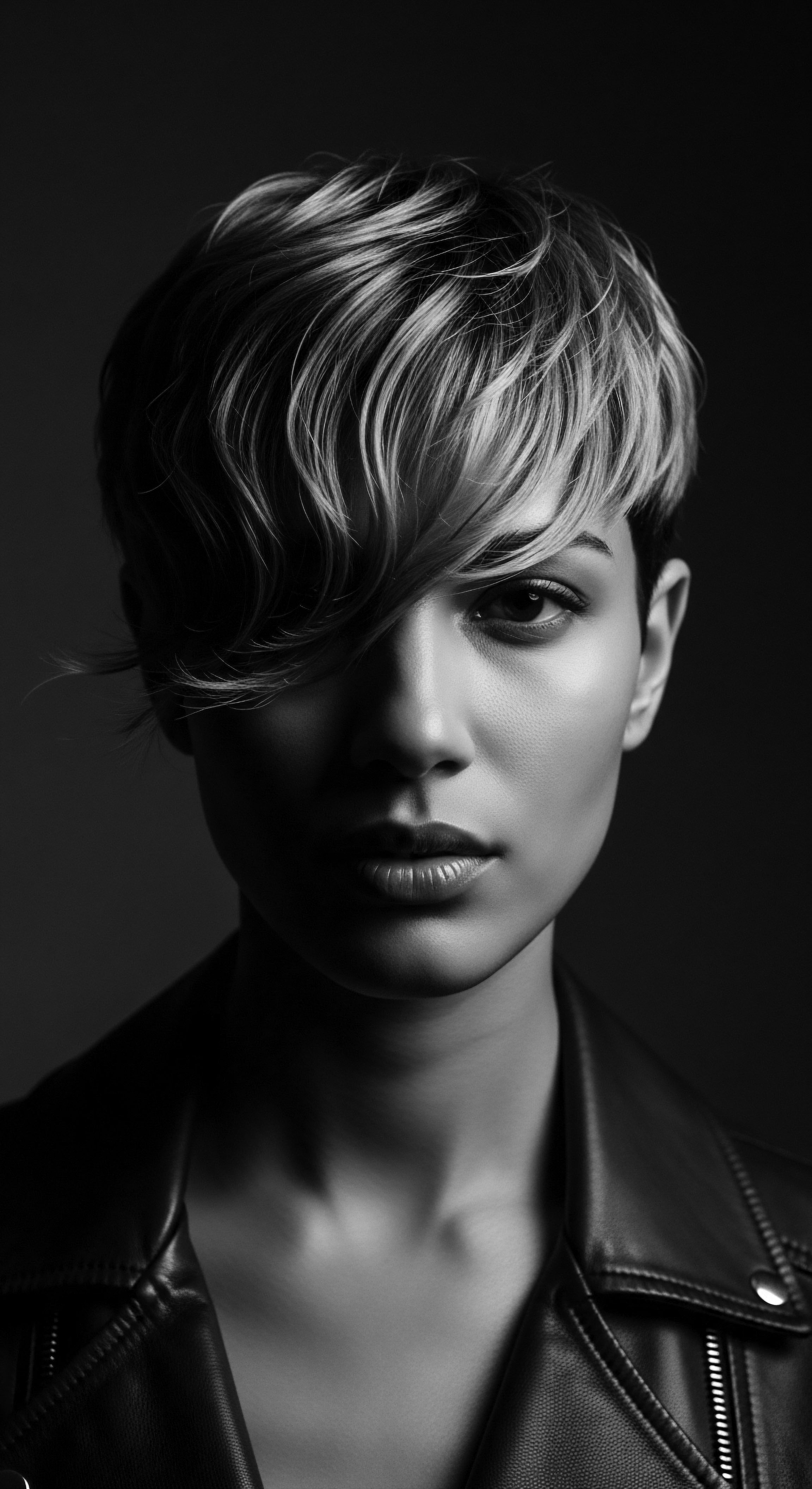
Addressing Textured Hair Challenges with Ancient Answers
Textured hair, by its very coiled nature, can be prone to dryness and breakage. The very structure of the hair strand, with its curves and bends, can make it more susceptible to moisture loss and mechanical damage. Ancient herbs provided potent solutions to these inherent challenges.
For dryness, botanicals rich in emollients and humectants were favored. Aloe Vera, with its gel-like consistency, offers significant hydration and soothing properties for the scalp, addressing irritation and dryness. Its use across various indigenous cultures—from Native Americans to African communities—speaks to its broad recognition as a moisturizing agent.
To combat breakage, herbs that fortified the hair structure were essential. As discussed, Shea Butter and Chebe Powder excel in creating a protective external layer, effectively minimizing the friction and environmental stressors that lead to snapping. The concept of “length retention” was intrinsically understood long before the term was coined in contemporary natural hair discussions.
Ancestors knew that strong, protected hair would retain its length, rather than simply “grow” longer. This distinction is vital for textured hair care, where growth often occurs, but retention is the challenge.
Beyond individual ingredients, the ancestral approach to problem-solving involved creating complex formulations. Blending multiple herbs, oils, and other natural elements allowed for a synergistic effect, where the collective properties addressed a wider range of concerns than any single ingredient might alone. This compounding of natural remedies speaks to a sophisticated understanding of botanical interactions and their combined benefits for hair resilience.

The Enduring Legacy in Modern Care
The wisdom of these ancient practices has not faded with time; instead, it provides a robust framework for contemporary textured hair care. Many modern formulations now consciously seek out these traditional ingredients, often driven by consumer demand for natural, heritage-aligned products. This return to roots signifies a recognition that the foundational knowledge passed down through generations holds enduring value.
The dialogue between ancestral wisdom and modern scientific validation strengthens our appreciation for textured hair heritage. It allows us to view traditional hair care not as relics of the past but as dynamic, living systems of knowledge that continue to inform, inspire, and heal. The ancient herbs, then, are not just historical footnotes; they are powerful conduits, relaying ancestral strength and beauty into the hands and strands of today.

Reflection
To walk the path of textured hair care is to connect with a living heritage, a stream of knowledge flowing from ancestral springs. The exploration of what ancient herbs brought benefit to textured hair transcends simple botanical facts; it becomes a meditation on identity, resilience, and the profound wisdom inherent in our past. Each herb, from the ancient shea tree of West Africa to the time-honored Amla of India, whispers stories of hands that cultivated, prepared, and applied these natural gifts with deep reverence. These traditions, born from necessity and a keen connection to the earth, preserved the vitality of hair that, for so long, has been a marker of lineage and strength.
The ‘Soul of a Strand’ ethos finds its true resonance here, acknowledging that hair is more than keratin and bonds. It is a carrier of history, a canvas for self-expression, and a testament to the enduring power of ancestral practices. As we consider the journey of these herbs from elemental biology and ancient uses to their contemporary significance, we recognize a continuous thread, a tender connection that binds us to those who came before.
This heritage, rich with the knowledge of plants that protected, nourished, and adorned textured hair, invites us to honor not only the herbs themselves but the systems of knowledge that allowed their benefits to be discovered and transmitted across countless generations. In embracing this legacy, we do not merely care for our hair; we participate in a timeless ritual, a vibrant relay of inherited wisdom that shapes our present and informs our future.

References
- Gallagher, D. Dueppen, S. A. & Walsh, R. (2016). The Archaeology of Shea Butter. Journal of Ethnobiology, 36(1), 108-124.
- Clinikally. (2023, February 15). Hibiscus for Hair Growth ❉ Benefits, Uses and More .
- Cultivator Natural Products. (2025, February 28). The Ancient History of Amla ❉ Hair Growth Secrets .
- Safo Hair. (2024, February 15). The Evolution of Black Hair Products ❉ A Journey from Homemade Remedies .
- Shankara Skincare. (2023, October 29). Why Hibiscus Oil Might Be the Ultimate Hair Growth Solution .
- Grow Billion Trees. (2025, June 12). Gudhal Plant ❉ Hair Care Hero, Medicinal Uses, and Garden Charm .
- Ningen Skin Sciences Pvt. Ltd. (2024, June 18). Benefits Of Hibiscus For Hair Growth .
- MINATURE. Fenugreek Powder for Hair Growth ❉ Strengthen & Nourish Naturally .
- Delhicious. (2024, March 27). Fenugreek Seeds .
- Reddit. (2021, August 26). No raw oils and butters vs. Traditional African hair care? r/Naturalhair.
- The History of Chebe Powder ❉ An Ancient African Hair Secret for Hair Growth. (2025, March 15).
- Africa Imports. Traditional African Secrets For Long And Healthy Hair .
- Colleen. (2020, August 28). The History of Textured Hair .
- WholEmollient. (2025, March 13). The Forgotten Wisdom of Chebe & Qasil ❉ What Modern Hair Care Is Missing .
- SheaButter.net. A History of Shea Butter .
- Chéribé. Do Chébé Hair Products Work? .
- PureWow. (2021, January 25). What Is Chebe Powder, and What Can It Do for Your Hair? .
- ResearchGate. (2024, February 1). Cosmetopoeia of African Plants in Hair Treatment and Care ❉ Topical Nutrition and the Antidiabetic Connection? .
- SEVICH. The Cultural Background and History of Chebe Powder .
